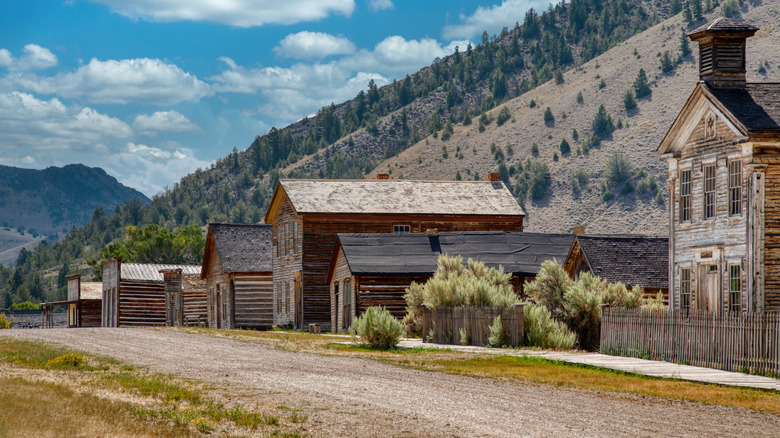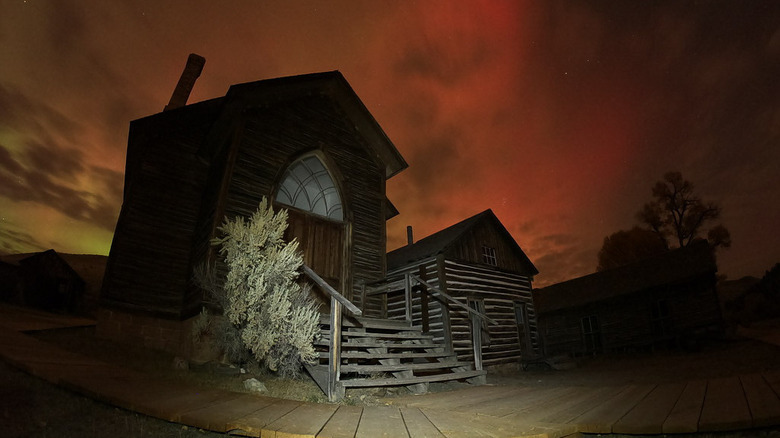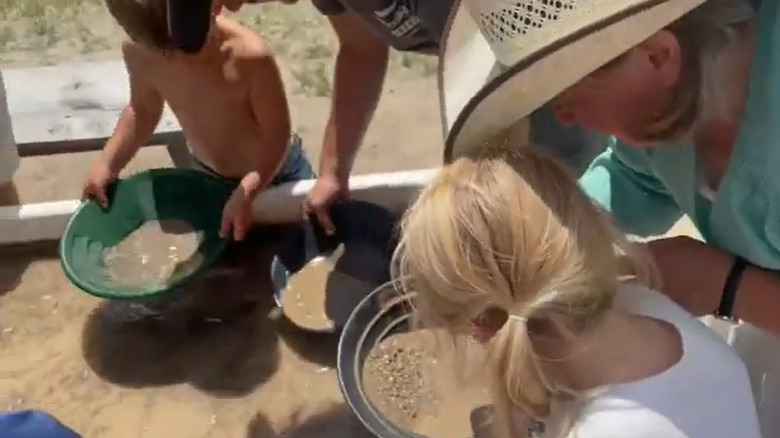Montana's Best Preserved Ghost Town Is A Vestige Of The Old West Near Stunning Camping Spots
While the Treasure State today is best known for its natural treasures, including Glacier and Yellowstone National Parks, settlers first came to the Montana territory to unearth treasures from the earth. Around the time the territory was created in 1864, cities such as Butte, the "Richest Hill on Earth," sprouted up like mushrooms to extract metals from the rich soil. Although many of these former settlements have faded into the past, the first of them, Bannack, is a well-preserved time capsule where you can explore the past and the rugged Southwestern Montana. After decades of boom and bust, the state stepped in to preserve it as a fascinating state park to experience the Old West.
Bannack was founded in Southwestern Montana in 1862, near Grasshopper Creek, where a gold rush attracted thousands of prospectors. The city grew so quickly that it was designated Montana's first territorial capital; however, like the gold, the boom did not last. Soon after, a larger gold deposit was discovered approximately 45 miles north of Bannock in Alder Gulch, 10,000 miners flooded the area and founded Nevada City and Virginia City, which became the new territorial capital. They, too, were left behind, yet are well-preserved and lively abandoned mining towns.
Whether you're visiting Big Sky Country on a road trip or flying in, Bannack is within easy reach of major highways and airports. Bannack is a short 25-minute detour off Interstate 15, just west of Dillon, the only city in the area. If you're flying in, you have several choices. Bozeman (BZN) and Idaho Falls (IDA) are a couple of hours away and have more flights; however, Butte (BTM) is 45 minutes closer.
A trip back in time in Montana
As the asphalt turns to gravel, then to dirt, you'll likely notice that you are moving further from modernity and into the well-preserved ghost town. Thankfully, you won't have to worry about being robbed by "the Innocents gang", run by the former sheriff who was hanged in town, but Bannack charges an entry fee; Montanans who have paid the $9 state park fee are free, however, all non-resident vehicles pay $8.
Once you're through, you'll arrive back in the 19th century. Bannack in its heyday had more than 50 occupied wooden buildings on Main Street, including an assay office, a dentist, a church, a Masonic Hall, and a haunted hotel —it is a ghost town after all. While the Park is open year-round, visitors who would like insight into the state's history, as well as some of the rowdy and wild characters that flocked to Bannack should visit during the summer months when the state park offers guided tours starting from the visitors center. And, your leashed pup is welcome to join you!
Being a former mining town, visitors to Bannack shouldn't miss one of the unique experiences from Montana's gold country. The park holds family-friendly activities and events about Montana history each Saturday through the summer, as well as ghost tours around Halloween. When available, state park staff offer gold panning lessons on summer weekends and provide all necessary materials. If you visit during the dead of Montana's cold winters when the dredge ponds freeze over, borrow and lace up a pair of skates and glide over remnants of where miners searched for gold, then grab a hot snack or drink in the warming hut.
Plan your camping trip to Bannock
If you've ever wanted to experience the Old West in full, from witnessing gunfights on Main Street, to learning how old-timers found gold or sewed quilts, and swinging your partner 'round and 'round, don't miss visiting Bannack during Bannack Days, when the ghost town comes alive. Held during the 3rd weekend of July, around the time of year Bannack was founded in 1862, the celebration is "the signature event for the Montana State Park system" and a one-of-a-kind event tying together past and present. Admission during this weekend is $5 for each adult, and $20 for a family, though pets aren't welcome.
Bannack State Park has two large campsites within the park, the Vigilante Campground (16 spots) and the Road Agent Campground (8 spots), which are fully unreserved. Both modern campsites have restrooms, electricity, and even Wi-Fi. The Vigilante Campground sits along Grasshopper Creek, where visitors report that the fish–and (unfortunately) the mosquitoes bite. Other nearby options, or for campers in a big rig, include the Beaverhead River RV Park and Campground, which has putt-putt, a volleyball court, and a pool. Another recommendation is the immaculate Southside RV Park, which visitors note for a creek running nearby.
While you can camp at the state park year-round, note that water is available only during the summer months. Dillon is roughly 30 minutes away and has everything you need to relax or explore Southwestern Montana, including gas, groceries, cold beer, and one of the state's best rodeos. Travelers who are still looking to explore the Old West with a modern twist shouldn't miss visiting these five signature cowboy destinations across the American West.


